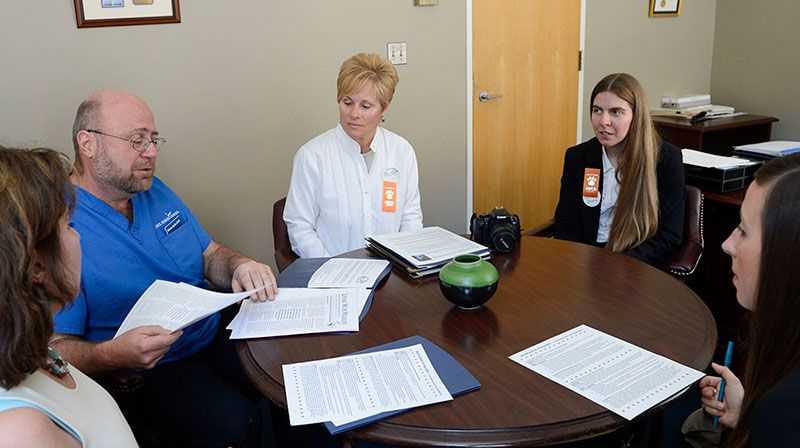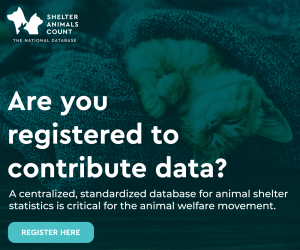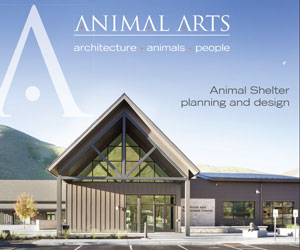Rescue Group Best Practices: forming your team

Every rescue group needs three layers of support to build a full team. At the top is the board of directors. These are the members who oversee the strategic direction, or long-term planning, of an organization. The next layer consists of staff, including an executive director, who runs the day-to-day operations of the rescue group. Some rescue organizations are able to pay a few staff members, but generally these groups rely on volunteers. It is still important to call these dedicated members “staff” regardless of whether they are paid, because it demonstrates that your organization is run professionally. Doing so also gives individuals a sense of ownership, responsibility and appreciation for the hours they contribute. The final layer of your team is the volunteers—people who help out on a regular basis by supporting the staff. Whether they foster animals, help out at adoption events, transport animals to veterinarian appointments or participate in countless other activities, volunteers are the lifeblood of any rescue group.
BUILDING A BOARD OF DIRECTORS
Every organization has a board of directors, which is a body of elected or appointed members who oversee the activities of the corporation. Their responsibilities are detailed in the organization’s bylaws, but typically, members of the board are responsible for governing the organization, appointing and reviewing the executive director, approving budgets, approving an organization’s policies and other similar tasks. Board members have an obligation of allegiance, care and duty to the organization. For rescue groups, it is important to recruit people who will help the organization fulfill its mission statement by providing advice and implementing long-term goals that will assist the organization plan for the future and create the vision of what it will become.
Board members are not the ones who run the day-to-day aspects of the rescue group (unless the organization has a “working board,” where board members double as staff), but instead are involved in strategic planning. That is, how will the organization get from where it is today to where it wants to be in a few years? The board of directors is a group who advances the organization’s mission by providing advice, money, time and expertise. A sample strategic plan devised and implemented by a board of directors may be helpful.
Generally, board members on working boards are expected to be heavily involved in strategic planning, fundraising, and policy decisions for the organization. When forming your board, think about the type of people who are going to help fulfill the organization’s mission and goals: Someone with fundraising abilities? Public relations or marketing savvy? Legal or accounting abilities? Management background? Political connections? Choosing friends and family to serve on your board may be necessary at first, but once you become established you will want to be more strategic in selecting board members. An independent board is important for your organization’s credibility. Having family members on the board could be viewed negatively, so it is an important point to consider.
Check the laws in your state to determine the exact number of people you need on a board, but at a minimum you will need to have a president, a secretary and a treasurer. The executive director is not normally a board member, but is instead accountable to the board of directors and also serves as the bridge between the board and the staff who carry out the day-to-day functions of the organization. Board members will need to be willing to commit their time and resources to the organization. You may want to implement term limits for members of the board or have non-voting members who are there exclusively in an advisory role. It is helpful to have a job description so that prospective members will know what will be expected of them.
Importantly, the board of directors is responsible for approving new contracts (such as foster agreements or adoption contracts) and authorizing certain individuals (usually the executive director, the board president and the board vice-president) to sign documents on the organization’s behalf. You may also want the board to authorize specific individuals to sign agreements relevant to their area of expertise. For example, the board might allow the adoption coordinator to sign adoption contracts or authorize the volunteer coordinator to sign volunteer agreements.
In keeping with good practices and building a trustworthy organization, it is important for the board to create well-documented polices that foster transparency. For example, it is essential to have a conflict of interest policy for the board of directors, document retention policy, code of ethics, whistleblower policy and, if applicable, written compensation practices.
A strong board of directors is vital to the current success and future development of your rescue group. Pick your board members thoughtfully!
BUILDING YOUR STAFF
While the Board of Directors is accountable for the long-term goals of the organization, the staff is responsible for running the day-to-day operations of the rescue group. After you have filed the articles of incorporation and applied to the IRS for tax-exempt status, the next important task is developing your team. Although the majority of your staff will be unpaid volunteers with other jobs and obligations, it is crucial that all individuals involved are committed to their positions to ensure that the rescue runs as smoothly as possible.
Do not put someone into a role simply because they offered or because you are eager to fill the position. The person’s skills must align with the post. For example, the outgoing individual who loves meeting new people but has never balanced a checkbook would better serve the organization as a volunteer coordinator than the financial coordinator. Similarly, the individual who does not bat an eyelash at mounds of paperwork, yet gets easily stressed by demanding customers, might be a great fit for the records manager but not the adoption coordinator. Do not be afraid to move people around and try them in different roles until you have the right fit. Even though it may be difficult to leave a crucial position empty until you find the perfect match, in the long-run your organization will be much better off having the right people in place.
Below is a basic template to use in building your rescue group’s staff, including suggestions for job responsibilities and helpful skills. This list is not meant to be all-inclusive, so use it as a starting point and tweak it to fit the needs of your organization. And do not be afraid to split these positions among several people—there is plenty of work to go around! Just remember that you do not need to fill all these positions immediately. Start small and continue to build as your rescue group gains more volunteers. Once your rescue group is established, it is certainly appropriate to pay staff according to the laws of your state. Organizations that have paid staff find that it leads to less turnover and more consistent policies and procedures.
» EXECUTIVE DIRECTOR
This person is the face of your organization and chosen by the board of directors. In addition to being the rescue group’s spokesperson, this individual is responsible for the day-to-day operations of the organization and interacts with the board of directors as well as the other staff members and volunteers. The executive director ensures that the organization is operating according to its mission statement and developing funds and policies for its future. The individual in this position should have business and media savvy as well as a considerable amount of patience and tact.
» RECORDS MANAGER
An obsessively organized and detail-oriented volunteer should fill this post. This individual should be tech savvy as she will be dealing with all paperwork and the animal management software. The records manager will update each animal’s profile with current location, medical history, and outcome, as well as update bios and pictures for the group’s website and other listings. As your organization grows and the number of animals coming in and out on a weekly basis explodes, this becomes one of the most overwhelming jobs. Find a couple of people to share the work or rotate the responsibilities every couple of months.
» FINANCIAL COORDINATOR
Which one of your friends is an accountant or math whiz? This person might be a good candidate to keep track of the organization’s finances, both outgoing expenses and incoming donations. When it comes time to file your 990 tax returns with the IRS, this person will prepare the information for your group’s accountant. If someone in your rescue group or community is an accountant, ask if he will donate his services come tax time. If you do not have this type of contact, seek help from a professional. If your rescue group has its 501(c)(3) status, you can inquire about receiving a reduced rate.
» CORPORATE RELATIONS COORDINATOR
You need someone who can reach out to corporations, such as pet stores or big box chains, and other service providers to negotiate prices for food, veterinary services, transport, and other items to allow your rescue to minimize expenses.
» FACILITY DIRECTOR
Are you going to have a brick-and-mortar facility to house some or all of your animals? Or even a few cages in a storefront? If so, you will need someone to run each facility. Preferably, this person will live close to the facility because she will have to be at the location on a frequent basis, including during emergency situations. The facility director will create protocols to care for the animals and ensure their well-being, as well as train, schedule and supervise volunteers. This position is ideal for someone with community outreach experience who can turn a job cleaning cages into a fun task in which volunteers feel invested. Good people skills are also a must as this person will be the face of the organization at that facility. Prior animal care experience and knowledge of shelter cleaning protocols are essential. It is critical to have someone on staff who knows how to handle unvaccinated animals, puppies with parvovirus, kittens with panleukopenia, proper cleaning solutions and ratios and a host of other common issues prevalent in animals that come from a shelter. This person should also be familiar with The Association of Shelter Veterinarians’ Guidelines for Standards of Care in Animal Shelters, which outlines best practices for running an animal facility, and understand how to implement these standards. When setting up your own facility, be sure to look into local kennel or zoning ordinances at the outset. Many other issues will have to be considered as well, such as how to fund the facility and deal with challenges such as neighbors who may oppose your group’s presence.
» FOSTER COORDINATOR
This position requires someone with a lot of patience and good people skills. The foster coordinator needs to give prospective foster providers a clear list of what the group will provide and what the foster provider will be responsible for when caring for animals. Importantly, this person needs to be constantly accessible via email and phone to respond to foster providers' questions in a timely manner. Additionally, the foster coordinator will coordinate returns and find a new foster home for pets when necessary. This post might also start a continuing education program designed to keep foster providers learning and engaged. It is essential to build good relationships with foster providers to keep them happy and willing to continue fostering! It is also a good idea to have this person implement a support network (such as a listserv or a group on social media) that enables foster providers to connect with each other.
» ADOPTIONS COORDINATOR/COUNSELOR
The adoptions coordinator position is great for someone who has reasonable email access throughout the day and time to field the many inquiries she is likely to receive. You want someone who would not feel compelled to use rigid rules for adoptions but instead would use general guidelines as set by the board of directors and is comfortable communicating with potential adopters to support the adoption process. This is another position that requires considerable tact, sensitivity and thoughtfulness. This post is a good fit for someone who is a “people person” and understands that customer service is critical to adoption success.
» ADOPTIONS EVENTS COORDINATOR
Who likes to get up early during the weekend? Grab this person to be the events coordinator and have him plan and run weekly adoption events. Responsibilities include showing up every week to set up and break down the events, having the appropriate paperwork on hand and projecting a warm and welcoming appearance to all potential adopters and foster providers who pass by.
» VOLUNTEER COORDINATOR
It is a good idea to have a volunteer coordinator on board to manage the various volunteer needs throughout the organization. This person will take all the volunteer inquiries and direct them to the appropriate staff member, as well as handle volunteer orientation and training sessions. This person should be comfortable using social media and other methods to actively recruit volunteers when needed. Because the volunteer coordinator is also responsible for troubleshooting volunteer issues and potentially terminating volunteers who do not work out, choose someone who is just as comfortable having difficult conversations as she is engaging and motivating volunteers. It is also important for the volunteer coordinator to have a general idea of the needs within each area of the organization so she can create or modify shifts when there is an imbalance. For example, if one facility has 50 volunteers to fill 14 shifts, but another location has only 10, the volunteer coordinator can request that some people move to the second location. Because this person will have contact information for all volunteers in the group, she will be a good resource when other immediate needs arise, such as when an animal needs transport to a new home or to the veterinarian. This is also the go-to person when an outside group, such as a local school or business, wants to volunteer for a day.
» MEDICAL COORDINATOR
This person is responsible for scheduling veterinarian appointments and working as a liaison between the rescue group and any veterinarians the organization works with. It is confusing and wasteful to allow everyone from the rescue to contact the veterinarian when an animal has a medical issue. It will make everyone’s life easier if only one or two people from a rescue group are allowed to approve veterinarian appointments. Putting approved veterinarian services in writing and faxing/emailing the authorization to the veterinarian before an appointment can reduce confusion and make the experience better for foster providers and veterinarians. Many veterinarians appreciate the clarity this process provides and it can also make it easier to cross-reference invoices with billing statements down the line. The only caution is that the medical coordinator should have constant access to email and phone, otherwise there may be problems scheduling and approving emergency appointments. Because medical situations can be unexpected and urgent, it is crucial to identify someone as the back-up for this position. The medical coordinator should have a general knowledge of common animal health problems so he can readily determine when it is necessary for an animal to see the veterinarian. This person should also establish protocols for certain situations. For example, if there is an emergency and a foster parent takes his foster animal to the veterinarian without getting prior approval from the medical coordinator, who would be responsible for the bill?
» BEHAVIOR AND TRAINING SPECIALIST
This should be someone the organization has on-call (whether on staff or not) to assist animals in your rescue with behavior issues, as well as pets and pet owners struggling with behavior problems at home (as a means of surrender prevention). The individual should have experience in humane training techniques. It is helpful to have standard operating procedures already drafted for common behavior issues that occur with your rescue animals. The person in this position should work closely with the volunteer, foster and adoption coordinators to help avoid problems before they start. Reaching out to local dog training facilities is an option as well, as many times they are happy to provide ongoing training for fosters.
» COMMUNICATIONS/MARKETING/PUBLICITY
Someone with excellent communication skills, social media savvy and webpage design experience is perfect for this job. This is also a great opportunity for someone who enjoys planning fundraising events or someone who wants to help but is not able to volunteer on a regular basis. Be careful in your choice—whoever represents you on social media will be considered the face of your organization. If you would not trust the person to give an interview to the media, she is probably not the best person to manage your organization’s online presence. You will also want a back-up administrator, someone else who has access to your social media channels, in case you lose the main volunteer.
» GRANT WRITING COORDINATOR
Notice the word “coordinator” on this one. It is not reasonable to expect one person to write all the grant proposals for your rescue, but it is helpful to have someone who can search through the resources to find applicable grants and form a team of people to draft the proposals. The coordinator keeps track of grant applications in progress, proposal deadlines, proposal specifications and eventual outcomes.
» FUNDRAISING EVENTS COORDINATOR
A fundraising team is necessary to help offset the organization’s expenses. Tasked with leading your rescue’s fundraising efforts, the individual in this position should have experience in event planning and should organize several different types of events throughout the year.
There are countless other positions your organization can create to make the rescue group run smoothly. Think about the goals and needs of your organization and plan accordingly. And remember, nothing is set in stone—you have the flexibility to adjust positions and responsibilities to make them work for you. Once you have your team in place, create an organizational chart so that it is clear to all staff and volunteers who is in charge of each area within your rescue group.
BUILDING A VOLUNTEER NETWORK
Volunteers are a crucial part of any rescue group—you cannot run an organization without them. From taking care of animals, to running adoption events, to transporting animals, to creating pet bios and taking pictures, there are countless opportunities for volunteers to help your rescue. Having a structured program in place is essential to recruiting and retaining volunteers. Providing training, guidelines and support for volunteers will help prevent frequent turnover.
In creating your volunteer program, think about your organization’s specific needs and the characteristics of your ideal volunteer. Then ask for just that in your position description. Also think about what the volunteers are going to get out of the experience. When crafting a position description, consider elements such as the purpose of the job, work involved, training required, learning opportunities offered, commitment needed, level of difficulty involved, skills necessary and type of environment expected. You should also consider listing the physical, mental and emotional requirements. At the same time, do not make your program so rigid and demanding that it discourages or excludes people who want to volunteer on a somewhat limited basis. Make room for everyone.
Communication is essential when it comes to running a successful volunteer program. What are your expectations of volunteers and how can they provide feedback to you? Asking for a minimum time commitment (three months is usually a good length of time) provides consistency for everyone involved and gives the volunteer an out if the experience ends up not being right for them.
It is important to hold an orientation and training session before you allow volunteers to roll up their sleeves and dig in. Try to hold orientations and trainings on a regular basis so that you do not lose someone interested in volunteering because the next orientation is too far in the future. The orientation should provide an overview of the organization, details about what is expected of volunteers and additional information that will help people decide whether or not to participate. The training session should cover all relevant rules, policies and procedures, as well as detailed information people need to accomplish their specific tasks. Handing out a volunteer manual that summarizes everything you went over in the orientation and training is a good practice. You should also create “how to” guidelines for every task volunteers are asked to do at your rescue. Even better, supplement the manual with pictures and keep it easily accessible. This will help volunteers and create consistency within the organization. The training session is also a good opportunity to collect a liability waiver from all volunteers (you should also obtain liability insurance, which is discussed in the next section). If you hold events at pet stores and other locations that you do not own, make sure you check for any age requirements before taking on volunteers under 18 years old.
Do not forget to show your volunteers the fruits of their labor. Let people know on a regular basis which animals have been adopted and share a success story along with pictures. Seeing the happy pets in their new homes or learning that 20 animals were adopted in one weekend is often the most fulfilling part of volunteering for a rescue group.
As volunteers get more engaged, they may also want to try new things. Take their offers of help seriously and, if possible, give them room to try new things that could benefit your group. It may be that their suggestions are not feasible. If this is the case, do not simply say “no,” but explain the reasoning and offer alternatives. This increases their buy-in and interest in the group, and can help retain those who are truly interested in helping long-term.



